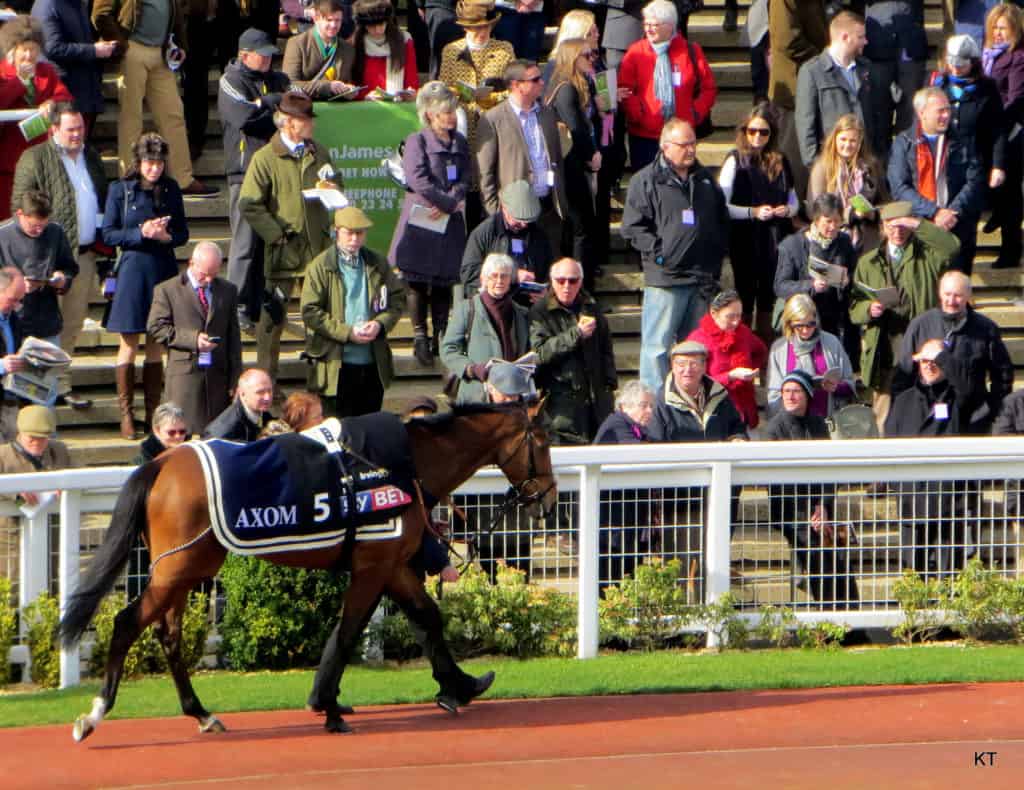“Irving in the parade ring” (CC BY-SA 2.0) by Carine06
In an attempt to make sure that all horses and jockeys remain safe in any upcoming events at Cheltenham Racecourse, the British Horseracing Authority has decided to cut the maximum field size for all two-mile chases. Instead of allowing 24 horses to race at the same time, now just 20 are going to be facing off against each other in the future.
A Brief History of Cheltenham Racecourse
Cheltenham races have been taking place since 1815, though the first race on Cleeve Hill didn’t take place until August 1818. It wasn’t long before crowds of around 30,000 race fans were visiting the racecourse during their annual two-day meet in July.
Over two hundred years later, Cheltenham Racecourse remains a staple in British racing culture, attracting thousands of fans to the grounds and millions of live viewers with each and every race. The races aren’t only available on British television either, as anyone from around the world can live stream events using the ITV Hub, Racing UK, Sky, and Virgin Media.
Of all British races, Cheltenham’s are particularly modern. For instance, racing fans from around the globe can also bet on their favorite horses through online sportsbooks including Paddy Power. There you’ll find everything you need to know about races, including details about the horses, odds and what each race entails. Needless to say, Cheltenham is really a part of the worldwide racing culture, rather than simply a British affair. So, it’s great that they are taking huge steps towards improving conditions for their racehorses.
Putting Race Horses First
The BHA report in which these changes were suggested also took many other factors into account, such as veterinary history, the jockeys’ abilities, the trainers’ history, and even race conditions. Following the report, a series of new measures were introduced, and they won’t just affect the Cheltenham Festival either.
From now on, there will be a pre-race examination and a “trot up” for all runners at Cheltenham, where detailed histories of each horse must be presented. If a horse is deemed unsuitable to race, they will be instantly withdrawn from the race to ensure it, and other horses, are not injured. True, these measures were in place during the 2018 Cheltenham Festival but only for the main race of each day, rather than for every individual event.
The BHA has also recommended that the two-mile handicap Grand Annual be moved in the schedule and should no longer be the last race in the four-day Festival. This is because it is believed jockeys tend to push their horses a little too hard in the two-mile chase, trying to climb the scoresheet.
A weight allowance has also been introduced for conditional jockeys who compete in the Martin Pipe Hurdle, thus encouraging trainers to employ more experienced jockeys. Any jockeys who fall due to lack of experience will be analyzed, with those who fall often being pushed to work with the BHA.
According to British paper The Telegraph, chief executive of the British Horseracing Authority, Nick Rust, has stated that horse welfare is at the front of his mind and that they must consider it at all times to retain horseracing’s “social license”. He also addressed the collective responsibility of all those involved in racing, saying: “we are starting to understand risk factors more. It’s never going to be zero, but do we think we can get it down further? Yes.”

